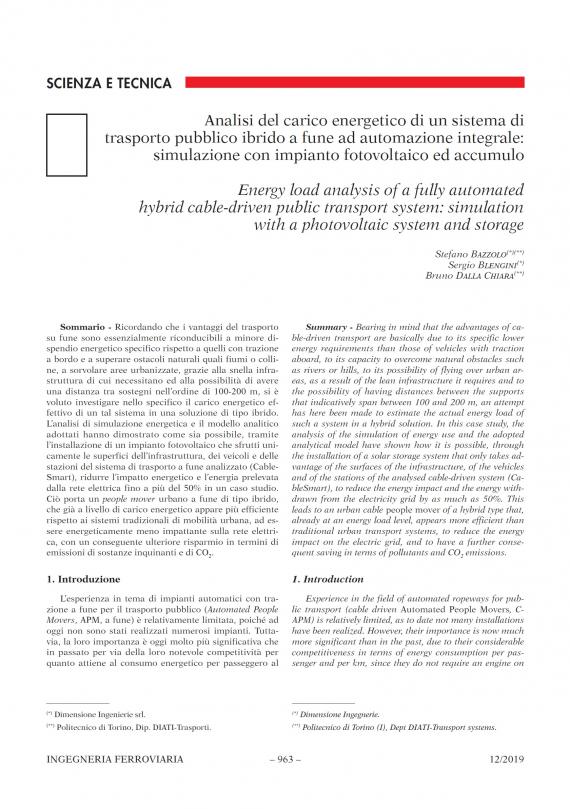
Summary - Bearing in mind that the advantages of cable-driven transport are basically due to its specific lower energy requirements than those of vehicles with traction aboard, to its capacity to overcome natural obstacles such as rivers or hills, to its possibility of flying over urban areas, as a result of the lean infrastructure it requires and to the possibility of having distances between the supports that indicatively span between 100 and 200 m, an attempt has here been made to estimate the actual energy load of such a system in a hybrid solution. In this case study, the analysis of the simulation of energy use and the adopted analytical model have shown how it is possible, through the installation of a solar storage system that only takes advantage of the surfaces of the infrastructure, of the vehicles and of the stations of the analysed cable-driven system (CableSmart), to reduce the energy impact and the energy withdrawn from the electricity grid by as much as 50%. This leads to an urban cable people mover of a hybrid type that, already at an energy load level, appears more efficient than traditional urban transport systems, to reduce the energy impact on the electric grid, and to have a further consequent saving in terms of pollutants and CO2 emissions.
- Dicembre





